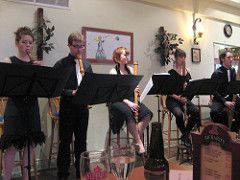The Magic Flute was Mozart’s final opera, written in 1791, the same year of his death. It had its first performance at the Theater auf der Weiden in Vienna.
The idea for The Magic Flute came about through the friendship between Mozart and Emmanuel Schikaneder, an actor, singer, and the manager of the Theater auf der Weiden, which was gaining popularity among the Viennese middle classes. Schikaneder suggested to Mozart that a pantomime-style comic opera would be a crowd-pleaser and potentially profitable for both of them. Mozart, facing financial strain at the time, readily agreed.
Mozart worked on the opera during the summer of 1791, which helped improve his spirits concerning his financial troubles. However, soon after starting work, he received a commission under mysterious circumstances that sparked much speculation. An anonymous request was sent to Mozart, asking him to write a requiem mass. The commission came with a condition that Mozart should not attempt to discover the identity of his patron. Despite the unusual nature of the commission, Mozart decided to accept it, considering the lucrative payment. To his surprise, Mozart also received a commission to write an opera to celebrate Emperor Leopold II’s coronation as King of Bohemia. Time was limited, and work had to commence immediately, causing Mozart to delay working on The Magic Flute, which displeased Schikaneder.
Upon returning to Vienna in September, Mozart, under pressure from Schikaneder, managed to complete The Magic Flute in time for its premiere on August 30th. Schikaneder’s prediction proved correct, as the opera was a tremendous success and attracted full audiences.
The original cast of The Magic Flute included Benedict Schack as Tamino, Emanuel Schikaneder as Papageno, Anna Gottlieb as Pamina, Josepha Hofer (Mozart’s sister-in-law) as the Queen of the Night, Franz Xaver Gerl as Sarastro, and Barbera Gerl as Papagena.
The libretto of The Magic Flute features a complex and potentially confusing storyline, with the main plot interspersed with comic subplots. The central story revolves around Tamino, a prince, and Pamina, the daughter of the Queen of the Night. Tamino becomes lost in a distant land and is pursued by a serpent, which is killed by three attendants of the Queen of the Night. Tamino meets Papageno, a birdcatcher who falsely claims to have rescued him. The three attendants punish Papageno, and they show Tamino a picture of Pamina, with whom he instantly falls in love.
The Queen of the Night appears and tells Tamino that he must rescue her daughter from the clutches of the evil Sarastro. She promises Tamino that he can marry Pamina if he frees her. Tamino is given a magic flute for his journey.
Tamino embarks on his rescue mission but encounters obstacles at the Gates of Nature and Reason. He then tries the Gate of Wisdom, where a priest informs him that Sarastro is actually a virtuous character. Tamino uses the Magic Flute in an attempt to bring Pamina to him. Eventually, Pamina arrives with Papageno. The guards try to capture them, but Papageno charms them with his magic bells.
Sarastro appears, and Pamina expresses her desire to leave with Tamino. After consulting the council of priests, Sarastro decrees that Pamina and Tamino can be together if they pass a trial by ordeal. With the assistance of the Magic Flute, they successfully complete the trials and are reunited.
Mozart and Schikaneder were both Freemasons, and The Magic Flute indeed contains numerous Masonic references. The number three, which holds significance in Masonic symbolism, is prominent in the opera. The opera is written in E-flat major, which has three flats. There are three ladies who attend the Queen of the Night, and three spirits are sent to assist Tamino and Pamina. The rituals that Tamino and Pamina undergo bear a strong resemblance to Masonic initiation rituals.
These are just a few examples, but it is evident that Mozart and Schikaneder deliberately incorporated Masonic elements into the opera. This is somewhat surprising considering the vows of secrecy that Masonic members are expected to uphold. However, the abundance of references suggests that it was not mere coincidence.
This adds another intriguing mystery to the enigmatic nature of Mozart. We may never have a complete answer to the extent of his involvement with Freemasonry and his intentions in including these references in The Magic Flute.
Nevertheless, The Magic Flute continues to thrive and is regularly performed worldwide, captivating audiences with its timeless appeal.
Manuel Marino is a seasoned Senior Producer, Music Composer, and Artist with over a decade of experience. He specializes in branded entertainment across various mediums, including video games, films, and advertising campaigns. With 20+ years as a game music composer, Manuel has worked on numerous platforms, creating diverse orchestral soundtracks. HIRE ME


 Manuel is a passionate, driven, and techsavvy AV technician,
Manuel is a passionate, driven, and techsavvy AV technician, 







